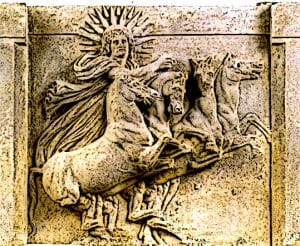Freedom – 7 Ray Crown of Liberty
Introduction – Discover the Stunning 7 Ray Crown of Liberty
The Statue of Liberty was erected on the Liberty Island in 1886.
It was dedicated by President Calvin Coolidge in the presence of a large crowd.
The statue has since become one of the most popular and recognizable icons of the American culture. It also served as an enduring embodiment of the ideals of United States.
One of the most important pieces of the statue is the crown that sits on its head.
Following is a quick look at the history, symbolism, meaning and other features of the crown of Statue of Liberty.
History
The Statue of Liberty was designed and created by sculptor Frederic Auguste Bartholdi. Bartholdi initially thought of putting a pileus on top of the statues head. However, he later decided to use a crown.
In 1929, a tragic incident occurred at the crown of liberty. A young man jumped out of one of the windows of the crown and fell to his death. This was the only suicide committed in the history of the Statue of Liberty.
In 1971, activists opposed to the Vietnam War flew upside-down US flag from the crown of the Statue of Liberty.
Later in the 2000s, access to the crown was closed due to security precautions. It was later restored during the term of President Obama.
Symbolism and Meaning
The crown of the Statue of Liberty features seven rays. The seven rays symbolize the seven seas and the seven continents.
The seven-ray crown is called an aureole which has been associated with the sun God Helios in the ancient Greek mythology.
So the crown is meant to signify that the statue of liberty is spreading light and showing the path to the immigrants and others seeking new hope and new opportunities.
Being similar to the headgear of Helios, the crown is a reflection of the divine origins of Liberty.
The crown also signifies the universal appeal and reach of liberty by signifying all the oceans and continents.
Observation Deck
The crown of the Statue of Liberty has 25 windows. The interior serves as an observation deck and is a popular spot for visitors.
When the statue was erected, two interior spiral staircases was designed. These led visitors to the interior of the crown from where they could enjoy vast views of the harbor.
Today, it is still possible to climb to the crown from the base of the statue. It takes a total of 354 steps for visitors to climb to the crown.
Inside the Crown
The climb to the crown of the statue is hard and rather congested. In some places, the stairs are only 19 inches wide.
The interior of the statue can get fairly hot during summers and the temperature inside the crown is particularly high.
For this reason, the National Park Service recommends visitors to take due precautions before deciding to make the climb.
Only 240 people are allowed to climb to the top daily.
Tickets may be reserved in advance because of limited slots and the large number of applicants.
Crown of Liberty Fast Facts
- The Crown of Liberty has 7 Rays.
- The Crown of Liberty is one of the most Famous Parts of the Statue.
- The Crown of Liberties rays symbolize the seven seas and the seven continents.
- The Crown is associated with the Sun God Helios.
- The Crown of Liberty represents light, freedom and hope.
- The Crown is a reflection of the divine origins of liberty.
- Statue of Liberty
- 4 Astounding Statue of Liberty Conspiracies
- Amazing Statue of Liberty History
- Amazing Statue of Liberty Torch 145 Year History!
- Famous Parts Statue of Liberty
- Freedom – 7 Ray Crown of Liberty
- Interesting Statue of Liberty Timeline – 1865 – 1986
- Liberty Island – 12 Acre Site
- Statue of Liberty 33 Amazing Facts
- Statue of Liberty Construction ** Awe-Inspiring ‘Lady Liberty’
- Statue of Liberty Famous People



